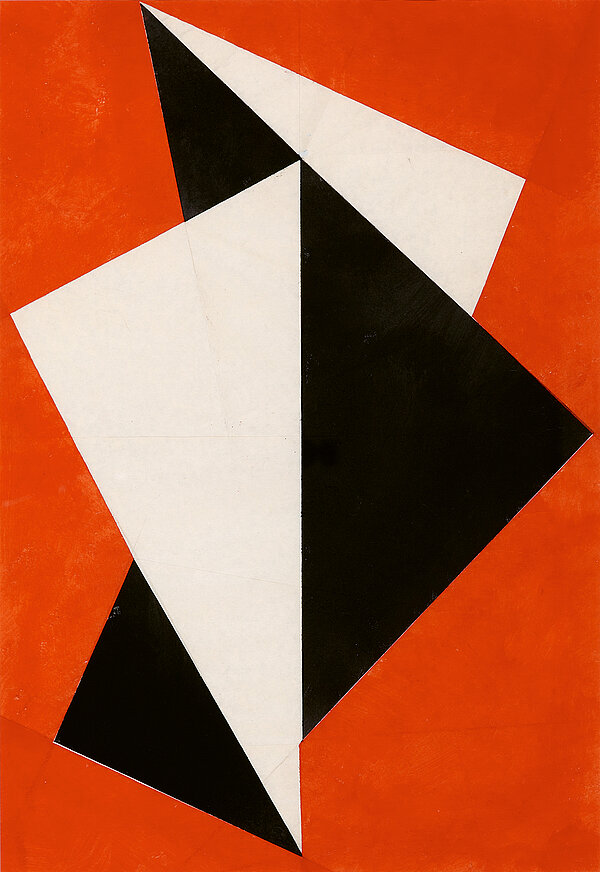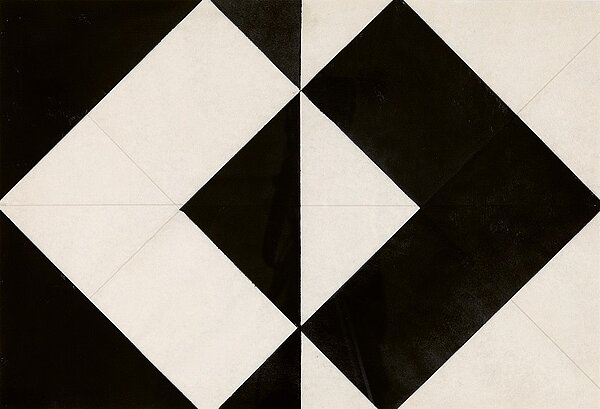Hermann Glöckner
Dreieckige Erhebungen auf Rot, 1960/1974−76
[Triangular Elevations on Red]
Tempera on paper
71,5 x 50 cm
Durchdringung zweier Quadrate, 1977/78
[Interpenetration of Two Squares]
Tempera on paper
50 x 71,5 cm
© VG Bild-Kunst, Bonn 2025
Photos: Gerhard Sauer
In Hermann Glöckner’s œuvre, which he accomplished in Dresden against the backdrop of two world wars and the GDR dictatorship, folding runs like an ongoing theme through the five decades of his career. Already in the 1930s Glöckner began to increase the complexity of his compositions through the act of folding. In a key work, Räumliche Brechung eines Rechtecks [Spatial Breaking of a Rectangle] done in 1935, Glöckner managed to arrive at a three-dimensional form by folding a rectangular sheet of bronze three times through 60, 270 and 90 degrees respectively. To this day, folding has maintained a steady position in concrete art. This may be because translating lines into clearly executed creases is in itself congenial to the idea of an objective language of forms. Yet Glöckner never completely submitted himself to the dictates of pure geometrical construction. When it came to folding, he payed much more heed to the value of the material itself. Thus he employed various kinds of paper, which he folded or even crumpled according to its constitution: stiff paper, for instance, with surfaces that could be done in different colours, or transparent paper, which allowed a number of layers to be visible when folded. His materials also included plastics, which he rendered into curvaceous shapes that were simultaneously influenced by chance, and also metal, which he folded with sharp creases.
The works shown here belong to a series of folded paper works that Glöckner coloured with tempera paints. When painting them, Glöckner guided himself by the lines that resulted from the folding process, but at the same time created larger connections between the individual shapes. In addition, creases have remained visible on the individual surfaces, which point to the processual manner in which the works were made through folding and unfolding.
Durchdringung zweier Quadrate [Interpenetration of Two Squares] poses the question of positive and negative in a clear, symmetrical composition. On the other hand, the use of black and white paint in Glöckner’s folded piece Dreieckige Erhebungen auf Rot [Triangular Elevations on Red] allows the work to open up in an interesting interaction between inside and outside, as is innate to every folded work. (Susann Scholl)
Hermann Glöckner
1889 born in Cotta (Dresden)
1987 died in Berlin (West)



